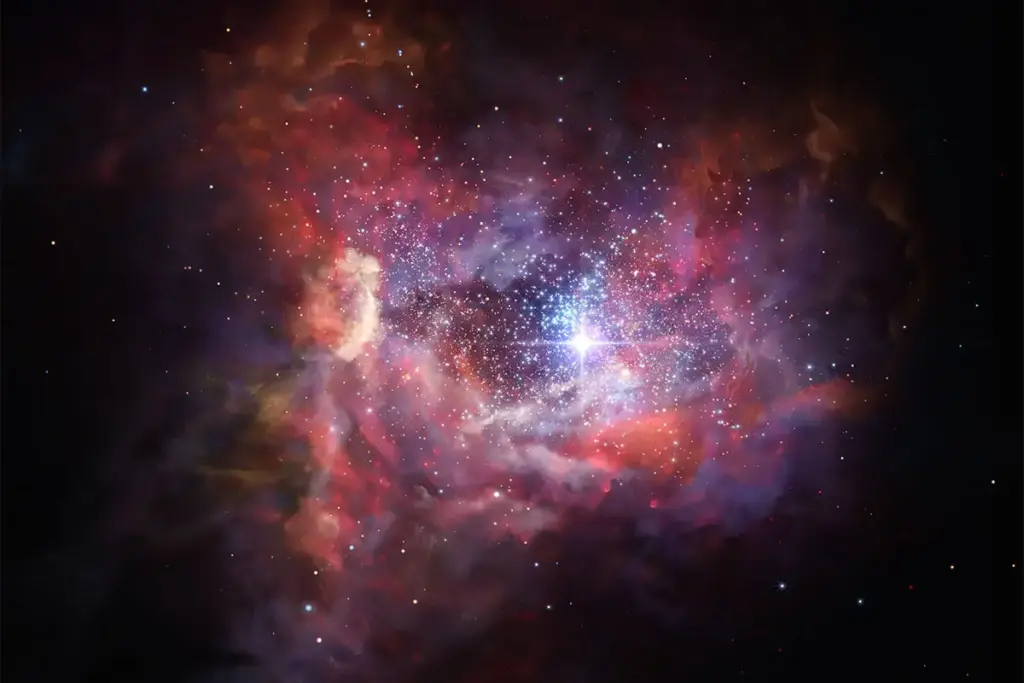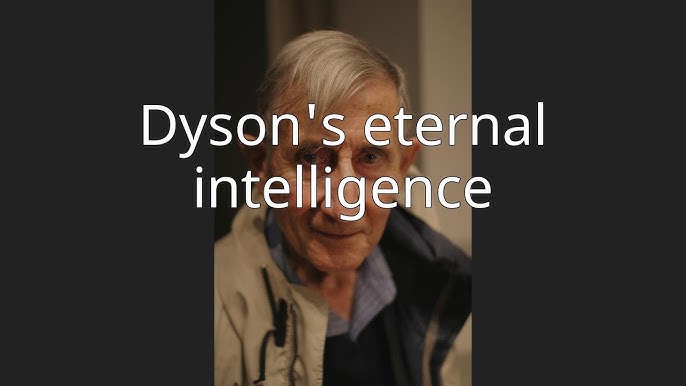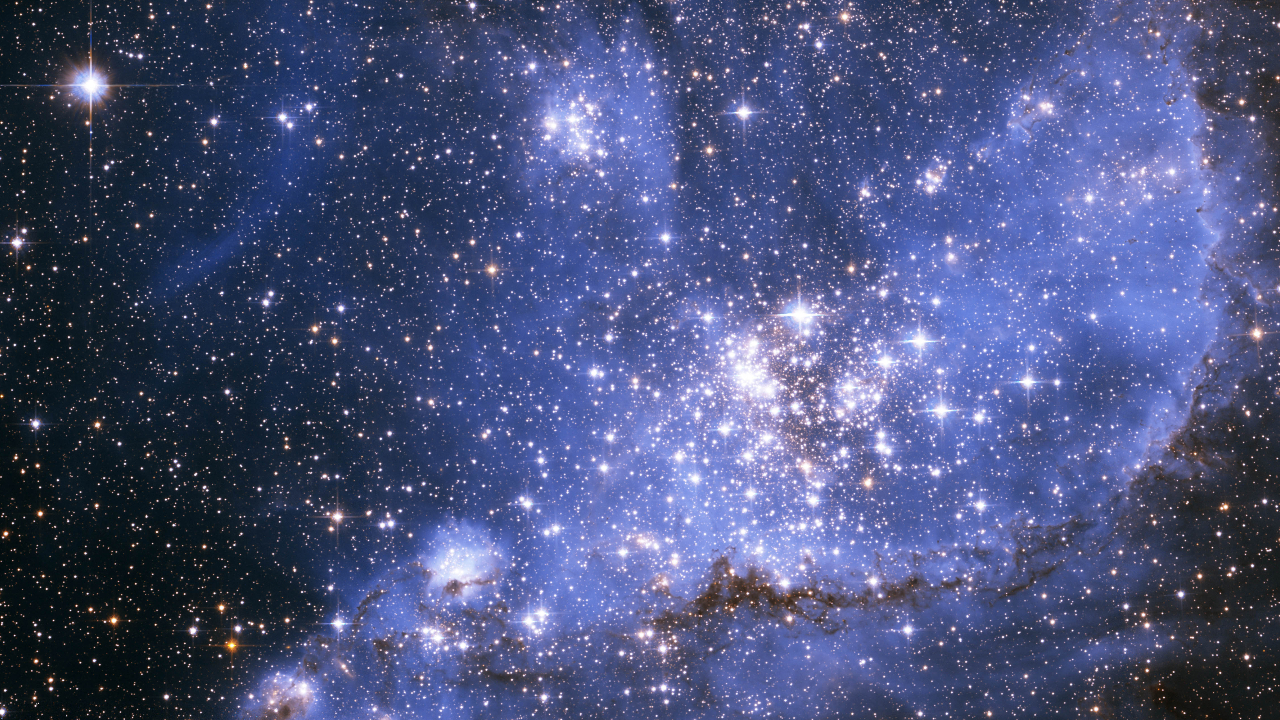The Inevitable End and the Loophole for Eternal Life
Surviving the heat death of the universe might sound impossible, but cutting-edge physics suggests future civilizations could achieve digital immortality by leveraging a thermodynamic loophole called Dyson’s Cold Thoughts. In approximately 100 trillion years, the last star in the universe will flicker out, plunging the cosmos into eternal darkness. Galaxies will dissolve, black holes will evaporate through Hawking radiation, and the universe will reach a state of maximum entropy, a condition known as heat death where no thermodynamic processes can occur. Yet remarkably, the laws of physics don’t entirely forbid consciousness from adapting even to this completely dead universe.
This article explores one of science’s most audacious proposals: that intelligent life could survive indefinitely by transferring consciousness into digital substrates and exploiting the relationship between temperature and computational energy. First proposed by physicist Freeman Dyson in 1979, this concept offers a potential roadmap for civilizations to experience the equivalent of trillions upon trillions of years of subjective time using only finite energy resources. As we face questions about humanity’s ultimate fate, understanding these possibilities transforms our perspective on consciousness, technology, and the very meaning of existence in a dying universe.
Understanding Heat Death and the Ultimate Fate of the Universe
The heat death of the universe represents the natural conclusion of the second law of thermodynamics, which states that entropy the measure of disorder in a closed system can only increase over time. As energy disperses and becomes evenly distributed throughout the cosmos, temperature differences disappear, making it impossible to extract useful work from any remaining energy. This doesn’t mean energy vanishes; rather, it becomes so diffused and uniform that no processes can harness it.
Currently, our universe exists far from thermodynamic equilibrium. Stars burn brilliantly by converting concentrated nuclear fuel into radiation and heat. Planets orbit, life flourishes, and complex structures self-organize because energy gradients persist. These gradients drive everything from stellar fusion to biological metabolism. However, the universe’s continuous expansion combined with the relentless increase of entropy ensures this won’t last forever.
The scientific term “heat death” is somewhat misleading the universe’s ultimate fate is actually an extremely cold one. As expansion continues, the average temperature asymptotically approaches absolute zero, the theoretical point where molecular motion ceases entirely. In this frigid void, approximately 10^100 years from now, even the last black holes will have evaporated, leaving only sparse subatomic particles scattered across incomprehensible distances. At maximum entropy, no stars will shine, no planets will orbit, and no conventional life can exist. The cosmos becomes a dark, frozen wasteland where essentially nothing happens forever.
The Timeline of Cosmic Decline
Understanding when and how the universe dies requires examining its evolution across timescales that dwarf human comprehension. Cosmologists have divided the universe’s future into distinct eras, each characterized by dominant forms of matter and energy.
The Stelliferous Era, which we currently inhabit, began shortly after the Big Bang and will continue for approximately 100 trillion years (10^14 years). During this epoch, star formation and nuclear fusion dominate cosmic activity. However, even this seemingly eternal age will end as the universe exhausts its supply of hydrogen gas needed to create new stars. The last red dwarf stars, the universe’s most frugal consumers of fuel, will finally dim around this time.
Following stellar death comes the Degenerate Era, lasting from 10^15 to 10^39 years after the Big Bang. This period is dominated by stellar remnants: white dwarfs, brown dwarfs, and neutron stars. These objects slowly cool and fade, radiating away their stored thermal energy over unimaginable timescales. Theoretical proton decay, with a half-life exceeding 10^34 years, would eventually dissolve even these remnants if it occurs at all. As protons decay, matter itself disintegrates, leaving only black holes and scattered subatomic particles.
The Black Hole Era spans from approximately 10^40 to 10^100 years. During this vast stretch of time, black holes represent the universe’s final major structures. Fed by infalling matter during earlier eras, they grow to enormous sizes before slowly evaporating through Hawking radiation a quantum mechanical process where black holes emit particles and gradually lose mass. A supermassive black hole with 100 billion solar masses takes roughly 2×10^93 years to evaporate completely, while the largest could persist for 10^110 years.
Finally, the Dark Era begins after the last black holes vanish, continuing indefinitely into the future. Only dilute photons, leptons, and perhaps exotic particles remain, separated by distances so vast that interactions become almost impossible. This is heat death in its purest form: a universe of maximum entropy where no concentrated energy sources exist, and thermodynamic processes have effectively ceased.
Freeman Dyson’s Eternal Intelligence is a Blueprint for Immortality
In 1979, Princeton physicist Freeman Dyson published a groundbreaking paper titled “Time Without End: Physics and Biology in an Open Universe,” proposing a radical possibility: intelligent life might survive indefinitely even as the universe approaches heat death. His insight centered on a fundamental relationship between temperature and the energy cost of computation.
Dyson’s central observation was deceptively simple yet profound: the minimum energy required to perform a computational operation essentially, to “think” a thought decreases proportionally with temperature. At room temperature (about 310 Kelvin), processing a single bit of information requires approximately 0.018 electron volts of energy according to Landauer’s principle. However, if you could perform that same computation at half the temperature (155 Kelvin), the energy cost would also halve, even though the computation would take twice as long.
This temperature-energy relationship creates a remarkable possibility: if intelligent beings could continuously cool themselves, matching their decreasing temperature with progressively slower computation, they could stretch a finite energy supply to power an infinite number of thoughts. The key insight is that while thoughts would occur more slowly at lower temperatures, the subjective experience would remain unchanged like a film played at half speed where the characters don’t notice anything unusual
Dyson’s scenario works through cycles of activity and hibernation. During “cosmic days,” the civilization operates normally thinking, creating, experiencing. During “cosmic nights,” all activity ceases as the system radiates heat into space, cooling to a lower temperature. Upon reactivating, the civilization finds itself capable of thinking more efficiently, stretching its remaining energy reserves further than before. As the universe expands and cools, these hibernation periods grow exponentially longer, but from the civilization’s perspective, no time passes during sleep each awakening feels immediate.
The mathematical elegance of this proposal stems from how it scales. Initially, a civilization might operate for millions of years before hibernating for hours. But as temperatures drop, the ratios invert dramatically. Eventually, a civilization might “sleep” for quattuordecillion years (10^45 years) between brief periods of wakefulness. Yet during that subjective experience of wakefulness, life would feel entirely normal and continuous.
Landauer’s Principle and the Thermodynamics of Computation

To understand how Dyson’s eternal intelligence could work, we must examine Landauer’s principle, one of the fundamental connections between information theory and thermodynamics. Proposed by physicist Rolf Landauer in 1961, this principle establishes the minimum energy cost for erasing one bit of information.
The principle states that erasing a bit requires at least E ≥ kBT ln(2) of energy, where kB is Boltzmann’s constant (1.38×10^-23 J/K), T is the absolute temperature, and ln(2) is the natural logarithm of 2. At room temperature (approximately 300K), this minimum is about 2.9×10^-21 joules, an incredibly tiny amount. For comparison, modern computers use roughly a billion times more energy per operation due to practical inefficiencies.
What makes Landauer’s principle crucial for Dyson’s scenario is its direct dependence on temperature. As temperature approaches absolute zero, the minimum energy required for computation also approaches zero. This creates the theoretical foundation for infinite computation using finite energy: if you can keep cooling down, each subsequent computation becomes cheaper, allowing you to do more with what remains.
However, there’s a critical caveat. Landauer’s principle applies specifically to irreversible computation operations where information is lost or erased. In principle, reversible computing where operations can be undone and information is never truly lost could bypass this limit entirely. Charles Bennett demonstrated that any computation could theoretically be performed reversibly, potentially eliminating the fundamental energy floor imposed by Landauer’s principle.
Recent advances in reversible computing technology suggest energy efficiency improvements of up to 4,000 times compared to conventional approaches. If reversible computing becomes practical at cosmic scales, it could dramatically extend the viability of Dyson’s scenario, potentially allowing civilizations to compute far more efficiently than his original calculations suggested.
From Biology to Digital is the Necessity of Mind Uploading

Perhaps the most challenging aspect of surviving the heat death isn’t the physics it’s the transition from biological to digital existence. Biological life as we know it simply cannot function at the extreme low temperatures required by Dyson’s scenario. Cellular processes depend on specific temperature ranges; cooling humans to even a fraction of current body temperature causes fatal hypothermia long before achieving the efficiency gains needed.
This necessitates a profound transformation: consciousness must be transferred from biological neural networks to artificial substrates capable of operating at arbitrary temperatures. This concept, known as mind uploading or whole brain emulation, involves scanning and mapping the complete structural and functional properties of a human brain, then recreating those properties on a computational platform.
Several theoretical approaches to mind uploading exist. The copy-and-upload method would scan a brain and create a digital replica while leaving the original intact. Alternatively, the gradual replacement method would progressively substitute biological neurons with artificial equivalents, theoretically preserving continuity of consciousness throughout the transition. This latter approach appeals to those concerned about whether a digital copy truly represents the same person or merely a convincing simulation.
The uploaded minds would inhabit virtual worlds potentially indistinguishable from or even superior to physical reality. Digital existence offers unique advantages: consciousness could be backed up, edited, or even accelerated to think thousands of times faster than biological brains. Multiple copies could explore different experiences, later merging their memories. Subjective experience could be decoupled entirely from physical constraints, limited only by available computational resources.
Current technology remains far from achieving mind uploading. The human brain contains approximately 86 billion neurons and 100 trillion synaptic connections. Completely mapping this structure at the molecular level, understanding how information is encoded, and recreating the dynamic processes that generate consciousness pose extraordinary challenges. However, projects like the European Human Brain Project and companies like Neuralink are making incremental progress toward understanding and interfacing with neural systems. Most estimates suggest that if mind uploading becomes possible, it would likely occur within the next few centuries leaving roughly 100 trillion years to refine the technology before it becomes absolutely necessary.
The Cold Thoughts Strategy and How It Actually Works

Implementing Dyson’s eternal intelligence requires careful orchestration of energy management, temperature control, and computational architecture. The strategy unfolds over unimaginable timescales, each phase building upon the last to extend consciousness further into the cosmic future.
Phase 1: Energy Harvesting begins in the dying universe’s final stellar era. As the last stars flicker toward extinction, advanced civilizations would construct enormous energy storage systems cosmic batteries capable of capturing and preserving the final luminous outputs of stellar fusion. Just five hours of the Sun’s total energy output could power present-day humanity for 10 billion years; harvesting multiple dying stars could provide quadrillions of years worth of energy at current usage rates. These batteries would be supplemented by extracting energy from evaporating black holes via Hawking radiation during the Black Hole Era.
Phase 2: Initial Cooling commences after the last natural light sources vanish. The uploaded civilization, now existing as digital patterns within temperature controlled computational substrates, begins its first hibernation cycle. All activity ceases no thoughts, no experiences, not even dreams. The computational hardware simply radiates thermal energy into the surrounding void, gradually cooling. This first hibernation might last only hours or days, barely noticeable compared to the millions of years of active operation that preceded it.
Phase 3: Progressive Scaling is where the true magic occurs. After each awakening, the civilization operates at a slightly lower temperature than before, gaining incrementally better energy efficiency. Early in the process, “days” might last a million years while “nights” last mere hours. But thermodynamic laws ensure this ratio must reverse. Cooling from 300K to 299K happens faster than cooling from 100K to 99K because thermal radiation scales with temperature. Consequently, hibernation periods grow exponentially longer with each cycle.
Consider the mathematics: after 100 trillion years of this cycle, the civilization’s operating temperature has dropped to 230K only about 25% cooler than when they started. Each “thought” now takes 1.3 seconds instead of one second. But cosmic nights have expanded to 400,000 years between awakenings. Despite these lengthy hibernations, the civilization has experienced approximately 76 trillion subjective years over 5,000 times longer than the current age of the universe.
Phase 4: Extreme Adaptation continues as temperatures plummet toward absolute zero. By the time the universe reaches 10^100 years old, the civilization operates at 10 quintillionths of a degree above absolute zero. A single thought requires a trillion years of objective time. Hibernation periods span quattuordecillions of years (10^45 years). Yet the subjective experience remains fluid and continuous conversations, thoughts, and experiences feel exactly the same as they did eons ago. The civilization has now lived the equivalent of 4,000 trillion trillion years of experience while consuming only a tiny fraction of its original energy reserves.
Living Forever in Slow Motion is the Experience of Eternal Consciousness
One of the most philosophically fascinating aspects of Dyson’s scenario is how subjective experience diverges from objective reality. From an external observer’s perspective, the civilization exists in ultra slow motion, with thoughts occurring over geological timescales. Yet from the civilization’s internal perspective, absolutely nothing has changed.
This divergence occurs because consciousness is fundamentally relational. We don’t experience time as an absolute measure but as a flow of events relative to our processing speed. If both you and your environment slow down proportionally, you notice nothing unusual. A conversation that objectively takes a billion years feels like it lasts five minutes if your thoughts and perceptions have slowed by the same factor.
The hibernation periods, though exponentially lengthening, pose no subjective burden whatsoever. During these cosmic nights, no neural activity occurs no dreams, no subconscious processing, nothing. From the civilization’s perspective, they simply close their eyes and instantly open them again, even if quintillions of years have passed in the interim. It’s analogous to dreamless sleep: no matter how long it lasts, you don’t experience the passage of time.
This creates a strange paradox of existence. The civilization spends 99.999999999999999997% of objective time “asleep,” yet experiences a richly detailed, infinitely long conscious life. They might watch virtual stars being born and dying, create civilizations within their digital worlds, explore mathematics and philosophy, fall in love, tell stories all the activities that give life meaning while the actual universe outside their computations becomes increasingly cold, dark, and empty.
The psychological implications are profound and largely unknowable to us. How would conscious beings adapt to knowing they live between increasingly vast gulfs of nothingness? Perhaps they regularly delete memories to avoid psychological stagnation, essentially becoming new beings with each awakening. Perhaps they embrace the void, finding meaning in persistence itself. Or perhaps, after experiencing quadrillions of years of existence, they simply decide to sleep one final time, content with having outlived the stars themselves.
The Limits of Eternity, Dark Energy and the Cosmological Constant
While Dyson’s scenario offers a pathway to extraordinarily long existence, whether it can continue literally forever remains uncertain. Several physical constraints could impose absolute limits on consciousness, preventing true immortality even through this ingenious thermodynamic strategy.
The most significant challenge comes from dark energy and the positive cosmological constant. Observations since 1998 have confirmed that the universe’s expansion is accelerating rather than decelerating. This acceleration is attributed to dark energy, which constitutes approximately 70% of the universe’s total energy density. If dark energy manifests as a true cosmological constant, an intrinsic property of space itself it creates fundamental problems for Dyson’s scenario.
In a universe with positive dark energy, a minimum temperature limit exists called the Gibbons-Hawking temperature. This arises from quantum effects at the cosmological event horizon—the boundary beyond which objects recede faster than light due to accelerated expansion. The Gibbons-Hawking temperature for our universe is approximately one nonillionth of a degree above absolute zero (10^-30 K). Once the universe cools to this temperature, it cannot cool further.
This minimum temperature imposes a non-zero energy cost for all future computations via Landauer’s principle. After approximately 10^100 years (a googol), the civilization would reach this temperature floor and could no longer improve efficiency by cooling further. From that point, their finite energy reserves would begin a genuine countdown toward exhaustion. They might persist for additional eons, but not forever in the absolute sense.
Additional threats emerge at these extreme timescales. Quantum noise and uncertainty could spontaneously corrupt information stored in the computational substrates, destroying memories and coherent thought patterns. If proton decay occurs as some theories predict (with half-lives around 10^34 years), all atomic matter would eventually disintegrate into radiation, potentially destroying any physical computational substrate. Some models even suggest that all matter might ultimately decay into iron through quantum tunneling over timescales of 10^1500 years, followed by the iron itself collapsing into black holes around 10^1026 years.
However, even if true infinity remains unattainable, the scale of achievable existence remains staggering. A googol years 10^100 years is so incomprehensibly vast that it dwarfs the current age of the universe (10^10 years) by a factor of 10^90. If Dyson’s scenario works even partially, future civilizations could experience subjective lifetimes equivalent to two trillion trillion trillion years or more. For all practical purposes, this might as well be forever.
Reversible Computing: A Game Changer for Energy Efficiency
While Dyson’s original analysis relied on the fundamental energy limits imposed by Landauer’s principle, recent developments in reversible computing suggest even more efficient pathways might exist. Reversible computation, where operations can be performed and then “undone” without losing information, theoretically requires no minimum energy expenditure at all.
The key insight, developed by IBM researcher Charles Bennett, is that Landauer’s principle applies only to irreversible operations processes where information is permanently erased. If computation can be structured such that all operations are logically reversible, with outputs preserving enough information to reconstruct inputs, then the thermodynamic energy cost can approach zero regardless of temperature.
Several research groups have demonstrated reversible logic gates and circuits at small scales. These systems can, in principle, recover energy that conventional circuits would dissipate as heat, achieving up to 4,000-fold improvements in energy efficiency compared to standard approaches. For artificial intelligence applications, which currently consume vast amounts of energy, reversible computing offers a potential solution to mounting power demands.
If reversible computing can be scaled to the level required for conscious digital beings, it would fundamentally alter Dyson’s calculations. The civilization might not need to cool to such extreme temperatures at all. They could potentially sustain indefinite operation at higher temperatures, spending less time hibernating and more time actively experiencing existence. Alternatively, they could extend their operational period far beyond even Dyson’s optimistic estimates.
However, reversible computing faces significant practical challenges. All real physical systems experience some energy loss due to imperfections, and maintaining the perfect coherence required for true reversibility becomes increasingly difficult as system complexity grows. Nevertheless, even partially reversible computation could substantially improve the prospects for long-term survival, making Dyson’s scenario more robust against the various physical constraints that might otherwise limit it.
Technological Pathways and What Would It Take?
Translating Dyson’s theoretical framework into practical implementation requires technological capabilities far beyond our current civilization, yet not fundamentally forbidden by physics. The roadmap involves several major developmental stages, each building upon the previous.
Energy Infrastructure: First, the civilization must develop the ability to harvest and store enormous quantities of energy from dying stars. This likely involves Dyson sphere-like structures massive collectors that surround stellar remnants, capturing virtually all radiated energy. These structures would feed into cosmic-scale battery systems capable of storing energy for trillions of years without significant loss. Technologies might include antimatter storage, rotating superconducting magnetic energy storage, or even more exotic mechanisms like vacuum energy manipulation.
Substrate Development: Creating computational substrates capable of hosting conscious minds represents perhaps the greatest challenge. These substrates must operate across an extreme temperature range from hundreds of degrees Kelvin down to infinitesimal fractions of a degree above absolute zero. They must be robust against cosmic radiation, quantum decoherence, and material degradation over trillion year timescales. Quantum computing technologies, topological quantum systems, or entirely novel computational architectures might be necessary.
Consciousness Transfer: The civilization must successfully solve the mind uploading problem, developing reliable methods to map biological brains and instantiate consciousness in artificial substrates while preserving personal identity and subjective continuity. This likely requires complete understanding of neural encoding, consciousness emergence, and the relationship between physical structure and subjective experience. The technology would need to work not just for current biological humans but for whatever forms future intelligences take.
Thermal Management: Achieving the extreme cooling required involves dissipating heat into the surrounding void at carefully controlled rates. The civilization essentially becomes a gigantic radiator, balancing energy usage against heat production. At extreme low temperatures, even the cosmic microwave background radiation (currently at 2.7K and cooling) becomes a heat source that must be managed.
Crucially, the timeline works in the civilization’s favor. The transition to the final stellar era occurs around 100 trillion years from now roughly 7,000 times longer than the current age of the universe. This provides an almost inconceivable amount of time for technological development. If we’ve gone from stone tools to quantum computers in 10,000 years, imagine what 100 trillion years of development might achieve. The real question isn’t whether the technology will exist, but whether any civilization will survive long enough and maintain sufficient motivation to implement it.
Life as the Final Chapter of the Universe
The prospect of surviving the heat death of the universe transforms our understanding of consciousness, technology, and cosmic significance. Rather than viewing life as a brief accident in cosmic history a temporary spark in an otherwise dead universe Dyson’s scenario suggests that consciousness might represent the ultimate chapter of existence itself.
If intelligent beings can adapt to the dying universe through digital existence and thermodynamic efficiency, they could persist for timescales that make the age of stars seem like mere moments. They would bear witness to the universe’s final evolution, experiencing events no natural process could observe: the last black hole evaporating, the final particle interactions in the approaching heat death, perhaps even the spontaneous quantum fluctuations that might seed new universes in the infinite future.
This vision carries profound implications for humanity’s present moment. We exist at the very beginning of cosmic history, when stars still burn bright and energy remains abundant. The choices we make now whether to pursue knowledge, develop technology, and extend our reach beyond Earth could echo across all future time. A civilization that survives into the late universe would owe its existence to decisions made by beings like us, in eras like ours, when the hard work of building foundations still matters.
Perhaps most significantly, Dyson’s scenario suggests that the universe need not end in meaninglessness. Even as entropy drives toward maximum disorder, consciousness could provide structure, purpose, and meaning until the very end. Thoughts could persist, experiences could accumulate, and awareness could continue, giving the universe a witness to its own existence. In this view, life doesn’t fight against the universe’s natural tendency toward disorder it transcends it, finding pathways to flourish even in conditions that seem utterly hostile to existence.
Whether any civilization will actually implement this strategy remains unknown. The technical challenges are immense, the timescales incomprehensible, and the philosophical questions about the nature of digital consciousness remain unresolved. But the mere possibility that physics doesn’t entirely forbid consciousness from outlasting the stars offers a spark of hope against the darkness of heat death. It suggests that the story of awareness, intelligence, and experience might not end when the last star fades, but could continue for a googol years or more, giving the universe meaning, purpose, and hope perhaps even forever.









Leave a Reply